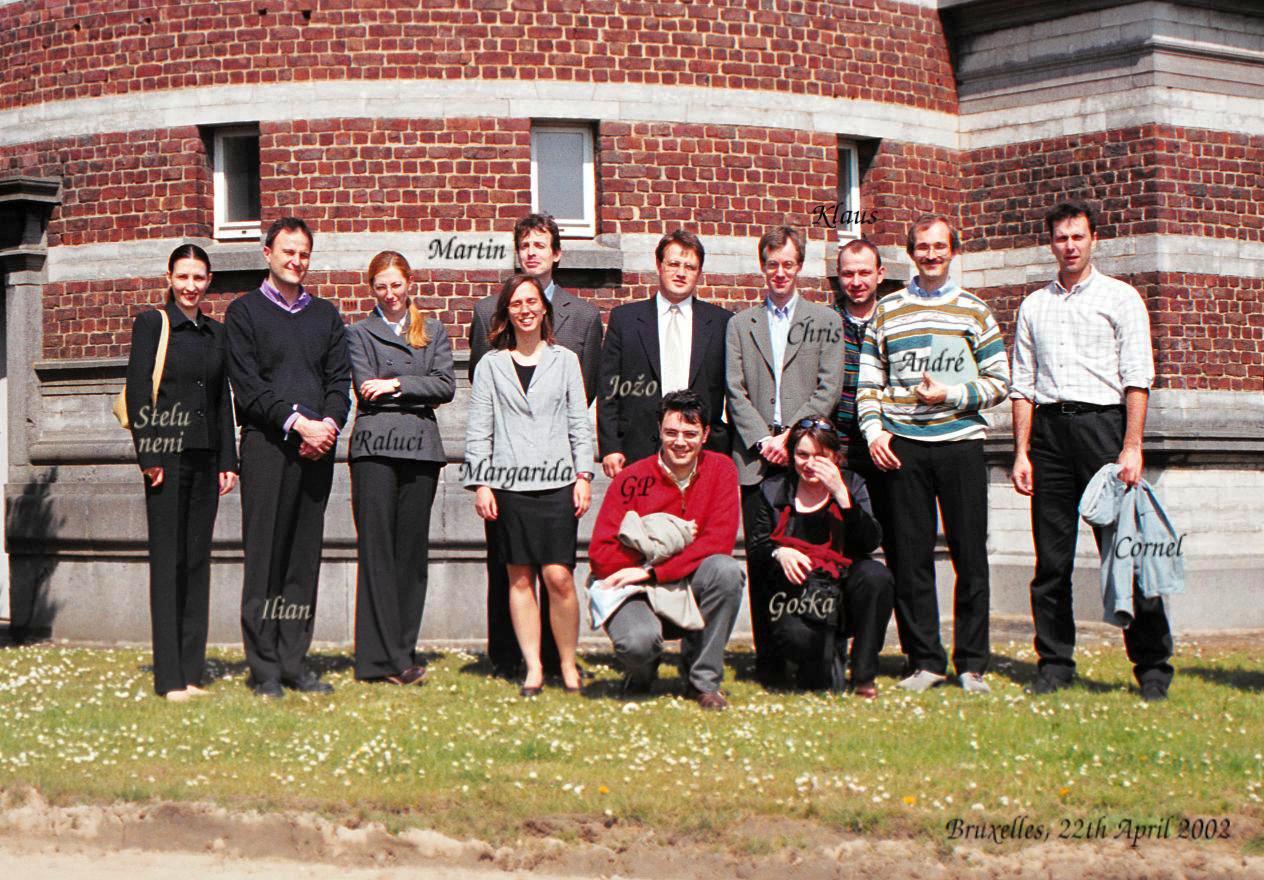
Since there was no major change along the last year, a description covering the four years of the project is provided hereafter.
For each call, vacancies were published on the web site of the EC and a notice was sent to each European ALADIN partner, and to SRNWP coordinators who are responsible for broadcasting informations to other European NMSs. The publicity to universities was left to individual NMSs.
|
|
first call |
second call |
third call |
|
date of publication |
19 April 2000 |
26 December 2000 |
30 March 2001 |
|
deadline to apply |
12 May 2000 |
1 February 2001 |
31 May 2001 |
|
date of selection |
30 May 2000 |
2 February 2001 |
7 June 2001 |
|
positions opened |
4 Pre-Doc + 3 Post-Doc (1) |
3 Post-Doc (3) |
5 Pre-Doc + 1 Post-Doc (5) |
|
positions filled |
4 Pre-Doc +1 Post-Doc (2) 0 women, 5 men |
1 Post-Doc (4) 1 man |
5 Pre-Doc + 1 Post-Doc (6) 4 women, 2 men |
|
candidacies |
10+1 3 women, 9 men |
1 1 man |
10+1 6 women, 4 men |
The ALATNET project had to face a very severe lack of candidacies on the opened Post-Doc grants, with 1 candidate only for 3 positions opened, at each call. Oppositely there was a great demand for Pre-Doc grants (10 candidates for 4 positions). This is doesn't look so surprising, retrospectively, since in this domain of "applied" research, most experienced scientists don't necessarily achieve a PhD thesis before starting practical work, nor later because of the burden of operational duties.
This was discussed at the second meeting of the steering committee, and lead to the following proposals, submitted to and accepted by the EC :
to prolong the contract of Christopher Smith in Prague from 12 to 23 months,
to transform the 16-months Post-Doc position in Budapest in a 20-months Pre-Doc one,
to do the same in Ljubljana, moving from a 13-months Post-Doc stay to a Pre-Doc position, with 16 months spent in Ljubljana and 4-months in Budapest (this short stay being simply shifted from a Pre-Doc position in Toulouse to this one).
The partition between Pre-Doc and Post-Doc positions was consequently changed as follows :
|
|
partner |
1 |
2 |
3 |
4 |
5 |
total |
||||||
|
grants |
|
initial |
final |
initial |
final |
initial |
final |
initial |
final |
initial |
final |
initial |
final |
|
Pre-Doc |
number |
5 |
5 |
0 |
0 |
1 |
1 |
0 |
1 |
1 |
2 |
7 |
9 |
|
total length |
78 |
78 |
0 |
0 |
23 |
23 |
8 |
28 |
25 |
41 |
134 |
|
|
|
Post-Doc |
number |
0 |
0 |
2 |
2 |
2 |
1 |
1 |
0 |
1 |
0 |
6 |
3 |
|
total length |
0 |
0 |
38 |
38 |
23 |
23 |
16 |
0 |
13 |
0 |
90 |
|
|
|
Total |
number |
5 |
5 |
2 |
2 |
3 |
2 |
1 |
1 |
2 |
2 |
13 |
12 |
|
total length |
78 |
78 |
38 |
38 |
46 |
46 |
24 |
28 |
38 |
41 |
224 |
231 |
|
|
Name |
Nationality |
Age |
M/F |
Start |
End |
Grant |
Place and length of stays |
|
|
Steluta ALEXANDRU |
Romania |
27 |
F |
01/11/01 |
30/11/03 |
Pre-Doc |
Budapest
|
20
|
|
Gianpaolo BALSAMO |
Italy |
26 |
M |
01/09/00 |
30/09/02 |
Pre-Doc |
Toulouse
|
16
|
|
Margarida BELO-PEREIRA |
Portugal |
27 |
F |
01/11/01 |
31/10/03 |
Pre-Doc |
Toulouse
|
15
|
|
Martin GERA |
Slovakia |
31 |
M |
01/11/01 |
31/05/03 |
Post-Doc |
Brussels
|
19
|
|
Ilian GOSPODINOV |
Bulgaria |
32 |
M |
01/06/01 |
31/12/02 |
Post-Doc |
Brussels
|
19
|
|
Raluca RADU |
Romania |
26 |
F |
01/09/01 |
30/11/03 |
Pre-Doc |
Ljubljana Budapest |
16 4 |
|
Andre SIMON |
Slovakia |
27 |
M |
01/01/02 |
31/12/03 |
Pre-Doc |
Toulouse
|
16
|
|
Christopher SMITH |
U.K. |
34 |
M |
01/09/00 |
31/07/02 |
Post-Doc |
Prague
|
23
|
|
Cornel SOCI |
Romania |
35 |
M |
16/05/00 |
31/07/03 |
Pre-Doc |
Toulouse Budapest |
15 4 |
|
Klaus STADLBACHER |
Austria |
30 |
M |
01/09/00 |
31/10/03 |
Pre-Doc |
Ljubljana
|
25
|
|
Malgorzata SZCZECH |
Poland |
28 |
F |
01/09/01 |
31/10/03 |
Pre-Doc |
Toulouse
|
16
|
|
Jozef VIVODA |
Slovakia |
28 |
M |
01/10/00 |
31/05/03 |
Pre-Doc |
Prague
|
23
|

|
|
|
2000 |
2001 |
2002 |
2003 |
04 |
|||||||||||||||||||||||||||||||||||||||||||||||
|
Young researcher |
Place |
M |
A |
M |
J |
J |
A |
S |
O |
N |
D |
J |
F |
M |
A |
M |
J |
J |
A |
S |
O |
N |
D |
J |
F |
M |
A |
M |
J |
J |
A |
S |
O |
N |
D |
J |
F |
M |
A |
M |
J |
J |
A |
S |
O |
N |
D |
J |
F |
||||
|
Steluta ALEXANDRU |
Budapest |
|
|
|
|
|
|
|
|
|
|
|
|
|
|
|
|
|
|
|
|
|
|
|
|
|
|
|
|
|
|
|
|
|
|
|
|
|
|
|
|
|
|
|
|
|
|
|
|
||||
|
Gianpaolo BALSAMO |
Toulouse |
|
|
|
|
|
|
|
|
|
|
|
|
|
|
|
|
|
|
|
|
|
|
|
|
|
|
|
|
|
|
|
|
|
|
|
|
|
|
|
|
|
|
|
|
|
|
|
|
||||
|
Margarida BELO-PEREIRA |
Toulouse |
|
|
|
|
|
|
|
|
|
|
|
|
|
|
|
|
|
|
|
|
|
|
|
|
|
|
|
|
|
|
|
|
|
|
|
|
|
|
|
|
|
|
|
|
|
|
|
|
|
|
|
|
|
Martin GERA |
Brussels |
|
|
|
|
|
|
|
|
|
|
|
|
|
|
|
|
|
|
|
|
|
|
|
|
|
|
|
|
|
|
|
|
|
|
|
|
|
|
|
|
|
|
|
|
|
|
|
|
||||
|
Ilian GOSPODINOV |
Brussels |
|
|
|
|
|
|
|
|
|
|
|
|
|
|
|
|
|
|
|
|
|
|
|
|
|
|
|
|
|
|
|
|
|
|
|
|
|
|
|
|
|
|
|
|
|
|
|
|
||||
|
Raluca Radu |
Ljubljana |
|
|
|
|
|
|
|
|
|
|
|
|
|
|
|
|
|
|
|
|
|
|
|
|
|
|
|
|
|
|
|
|
|
|
|
|
|
|
|
|
|
|
|
|
|
|
|
|
||||
|
|
Budapest |
|
|
|
|
|
|
|
|
|
|
|
|
|
|
|
|
|
|
|
|
|
|
|
|
|
|
|
|
|
|
|
|
|
|
|
|
|
|
|
|
|
|
|
|
|
|
|
|
||||
|
Andre SIMON |
Toulouse |
|
|
|
|
|
|
|
|
|
|
|
|
|
|
|
|
|
|
|
|
|
|
|
|
|
|
|
|
|
|
|
|
|
|
|
|
|
|
|
|
|
|
|
|
|
|
|
|
||||
|
Christopher SMITH |
Prague |
|
|
|
|
|
|
|
|
|
|
|
|
|
|
|
|
|
|
|
|
|
|
|
|
|
|
|
|
|
|
|
|
|
|
|
|
|
|
|
|
|
|
|
|
|
|
|
|
||||
|
Cornel SOCI |
Toulouse |
|
|
|
|
|
|
|
|
|
|
|
|
|
|
|
|
|
|
|
|
|
|
|
|
|
|
|
|
|
|
|
|
|
|
|
|
|
|
|
|
|
|
|
|
|
|
|
|
||||
|
|
Budapest |
|
|
|
|
|
|
|
|
|
|
|
|
|
|
|
|
|
|
|
|
|
|
|
|
|
|
|
|
|
|
|
|
|
|
|
|
|
|
|
|
|
|
|
|
|
|
|
|
||||
|
Klaus STADLBACHER |
Ljubljana |
|
|
|
|
|
|
|
|
|
|
|
|
|
|
|
|
|
|
|
|
|
|
|
|
|
|
|
|
|
|
|
|
|
|
|
|
|
|
|
|
|
|
|
|
|
|
|
|
||||
|
Malgorzata SZCZECH |
Toulouse |
|
|
|
|
|
|
|
|
|
|
|
|
|
|
|
|
|
|
|
|
|
|
|
|
|
|
|
|
|
|
|
|
|
|
|
|
|
|
|
|
|
|
|
|
|
|
|
|
||||
|
Jozef VIVODA |
Prague |
|
|
|
|
|
|
|
|
|
|
|
|
|
|
|
|
|
|
|
|
|
|
|
|
|
|
|
|
|
|
|
|
|
|
|
|
|
|
|
|
|
|
|
|
|
|
|
|
||||
Given the standing structure of the ALADIN action, the experience already acquired in Toulouse and Prague for structured visits, the past benefits of the bilateral Slovenian-French, Hungarian-Slovenian and Hungarian-French actions and the experience of the recruited Post-doc students, there was no particular surprise in the integration of all twelve ALATNET young researchers in their respective teams.
The participation to the four ALATNET seminars and to European workshops allowed cordial contacts with a large community European NWP scientists, young as well as experienced ones.
The most significant assessment of the success
of the integration is maybe this quotation from Cornel Soci (in an
e-mail sent on the 8th of April 2004) :
«There
is also another important aspect : the friendship. As a young
ALATNET student I had the opportunity to meet other ALATNET students
and meteorologists from different countries. Now, some of them are
good friends of mine. They come from France, Hungary, Poland, Italy,
Portugal, Slovakia, Slovenia, Bulgaria,
Austria, Czech Republic.»
The basic training of young researchers :
on ALADIN whenever required (i.e. mainly for G.P. Balsamo and C. Smith, who did not come from ALADIN partner countries),
on the computing environment,
on the bases of the chosen research topic,
relied on individual hosting NWP teams and mentors, as well as the attendance to local conferences or training courses.
Some attended external training courses to learn foreign languages :
S. Alexandru (Budapest) : Beginner Hungarian Language Course at Katedra Nyelviskola and Upper Intermediate English Language Course at International House.
G.P. Balsamo (Toulouse) : French Language Course via Alliance Française.
M. Belo-Pereira (Toulouse) : French Language Course via Pôle Universitaire de Toulouse.
C. Smith (Prague) : Czech for Foreigners Course at the University (first two stages).
C. Soci (Budapest) : Beginner Hungarian Language Course.
But for others this was not required : e.g. Jozef Vivoda was already speaking Czech, Cornel Soci , Ilian Gospodinov and Malgorzata Szczech French, and Andre Simon several languages ...
Exchanges with other teams, reports, presentations during workshops or at the level of the hosting institute, also helped them to improve language skill (mainly English, apart from C. Smith of course).
J.F. Geleyn (P1) K. Stadlbacher (P5)
P. Bénard (P1) J. Vivoda (P3)
G. Radnoti (P4) R. Radu (P5)
Distant supervision between ALATNET centres also concerned several non-ALATNET PhD students or young researchers.
The young researchers had to provide regularly detailed reports : every 6 months for the ALATNET Newsletters, every year for the Annual Progress Reports, extended abstracts for international workshops, Internal ALATNET reports, ... Such intensive writing exercises also helped most of them to improve language skill (scientific English).
First ALATNET training course, on "High Resolution Modelling" (15-26/05/2000) :
Second ALATNET training course, on "Data Assimilation" (11-22/06/2001) :
Third ALATNET training course, on "Numerical Techniques" (27-31/05/2002) :
Ecole d'été internationale "Interactions Aerosols -Nuages -Rayonnement" (16-28/09/2001) :
NATO school on "Data Assimilation for the Earth System" (May 2002) :
G.P. Balsamo, I. Gospodinov and C. Soci attended the joint 22th
EWGLAM - 7th SRNWP meetings in Toulouse (Fr, 2000);
I.
Gospodinov, C. Soci, M. Szczech and K. Stadlbacher attended the 10th
ALADIN workshop, in Toulouse (Fr, 2001);
C. Smith and
J. Vivoda attended the 3rd SRNWP workshop on "Numerical
Techniques", in Bratislava (Sk, 2001);
C. Smith, C.
Soci, M. Szczech and J. Vivoda attended the joint 23th EWGLAM -
8th SRNWP meetings, in Cracow (Pl, 2001);
G.P. Balsamo
attended the 2nd SRNWP workshop on "Surface Processes,
Turbulence and Mountain Effects", in Madrid (Es,
2001);
K. Stadlbacher attended the WMO workshop on
"Quantitative Precipitation Forecast Verification", in
Prague (Cz, 2001);
G.P. Balsamo, M. Belo-Pereira, M. Gera,
I. Gospodinov, A. Simon, C. Smith, C. Soci, K. Stadlbacher, M.
Szczech and J. Vivoda, attended the 12th ALADIN workshop, in
Medulin (Hr, 2002);
S. Alexandru and J. Vivoda attended the
joint 24th EWGLAM - 9th SRNWP meetings, in De Bilt (Nl,
2002);
K. Stadlbacher and R. Radu attended the ALATNET
mini-workshop on "Coupling", in Ljubljana(Si,
2003);
S. Alexandru attended the XXIII General Assembly of the
International Union of Geodesy and Geophysics (IUGG), in
Sapporo (Japan, 2003);
M. Belo-Pereira and A. Simon attended the
joint 25th EWGLAM - 10th SRNWP meetings, in Lisbon (Pt,
2003);
all young researchers apart from Ilian Gospodinov (not
willing) attended the ALATNET seminar on scientific results
(Hu, 2003);
S. Alexandru, G.P. Balsamo, M. Belo-Pereira and
C. Soci attended the joint ALATNET - LACE workshop on "
Data Assimilation", in Budapest (Hu, 2003);
J. Vivoda
attended the 5th SRNWP workshop on "Non-hydrostatic
modelling", in Bad Orb (De, 2003);
M. Szczech attended
the 13th International TOVS Study
Conference, in Ste Adèle, (Québec, Canada,
2003);
K. Stadlbacher and J. Vivoda, attended the 13th ALADIN
workshop, in Prague (Cz, 2003);
and J. Vivoda gave a talk
in Toulouse (Fr) at the very end of the project (23/02/2004).
As explained in part B.4.4 before, it was not possible to send R.
Radu to an international workshop. It is a pity, since the
participation to workshops clearly helped the youngest students to
acquire self-confidence.
The participation to these workshops was
not always supported by ALATNET funds, especially in the case of
events outside the EU and associated states.
The ALATNET program of work included the organization of a seminar and 1 (or maybe 2) training course(s) for beginners. While the latter became obviously unnecessary given the good level of the recruited young researchers, we organized 3 topical training courses covering the main aspects of numerical weather prediction, and a concluding ALATNET seminar to allow young researchers meet and present their results.
The 3 topical training courses were open to European students and to non-European ALADIN students. All European NMSs were informed in due time, as for ALATNET vacancies. Every ALATNET young researcher attended at least one of these seminars. All 5 ALATNET centres contributed each time to lectures.
These seminars, especially the first ones, correspond to peaks in the ALATNET effort :
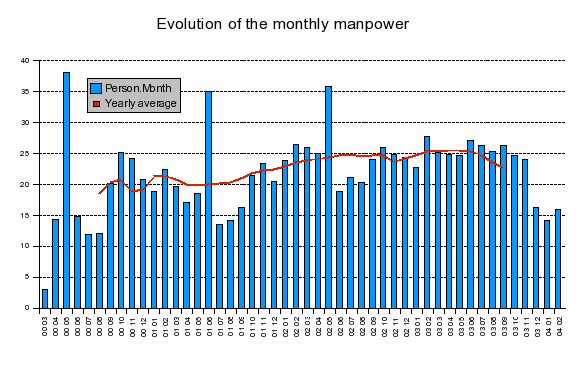
Here is a short overview of these events, the organization of which is detailed on the ALATNET web site.
ALATNET seminar on High Resolution Modelling
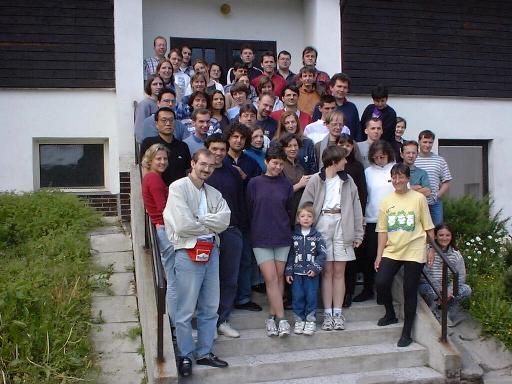
ALATNET seminar on Data Assimilation
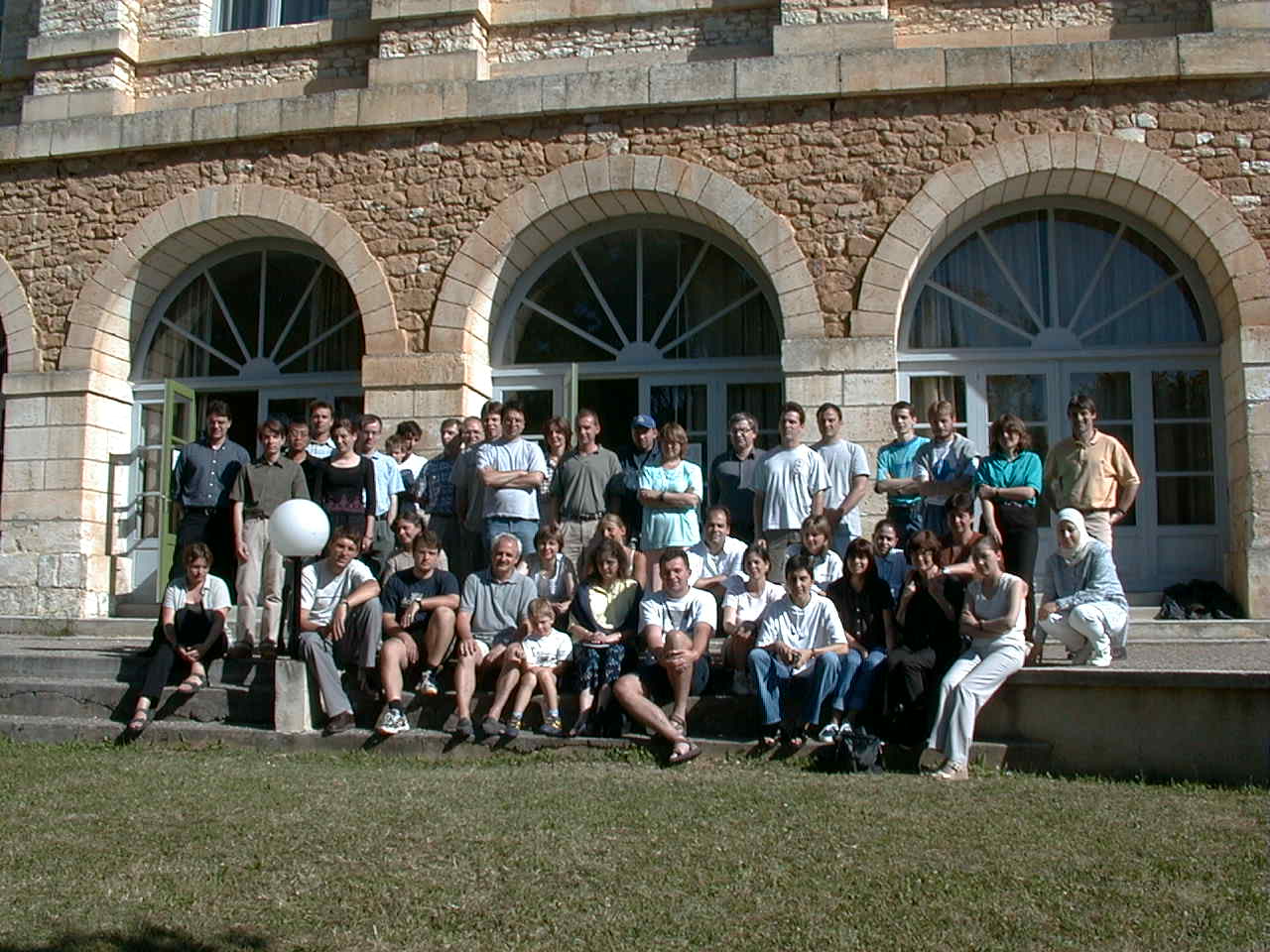
ALATNET seminar on Numerical Techniques
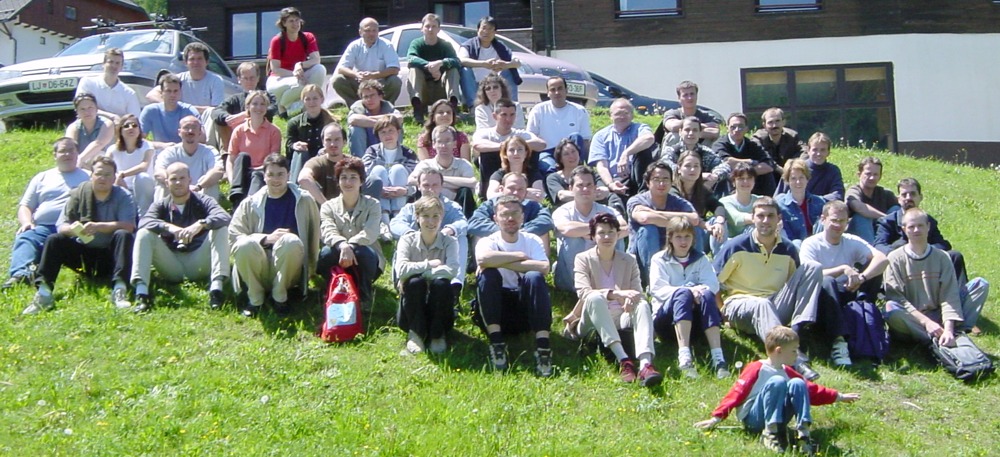
ALATNET seminar on Scientific results
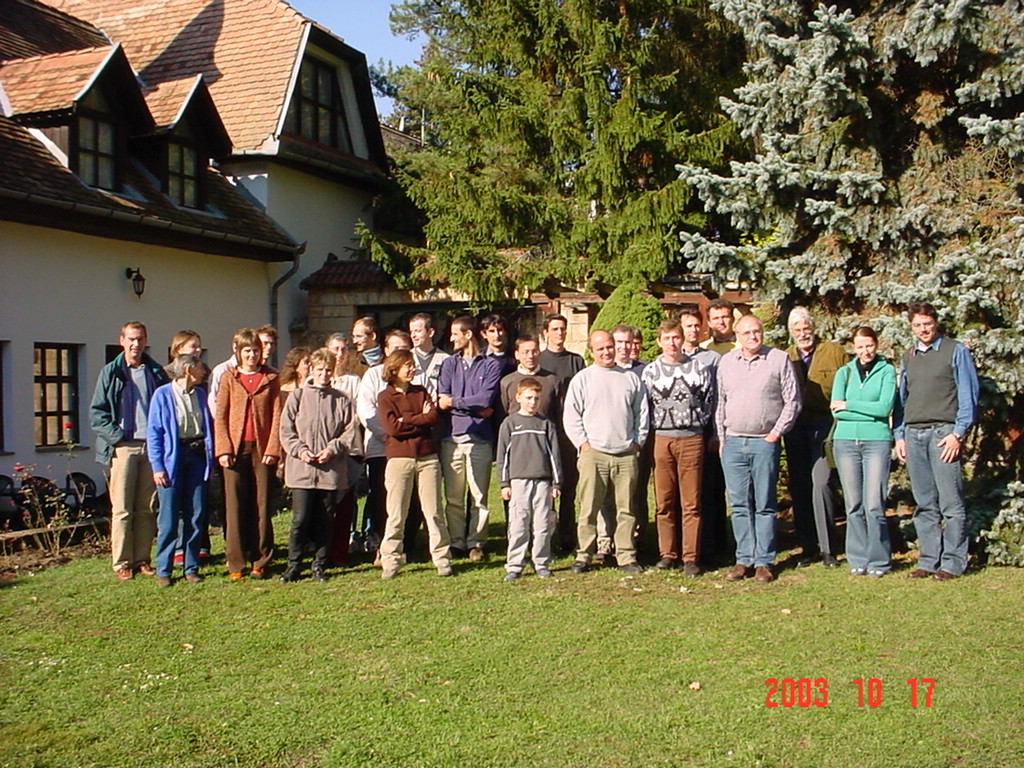
We have the following parity among the ALATNET young researchers :s
|
|
Young Researchers |
|||
|
Country |
Pre-Doc |
Post-Doc |
||
|
|
Women |
Men |
Women |
Men |
|
ALADIN |
4 |
4 |
0 |
2 |
|
non ALADIN |
0 |
1 |
0 |
1 |
We managed to reach the ratio of 1/3 of women among the young researchers (without any "positive discrimination"), which is slightly more than the equivalent partition within the ALADIN project, which is itself in a very good position concerning the partition women / men at the European level (as concerns NWP, and despite huge discrepancies between the various ALADIN teams).
Despite advertising and a wide-spreading of the calls for candidacies, only 2 young researchers over 12 came from other European NWP consortia. The first two calls were not open to students from the five ALATNET countries, so as to share the benefits of the network between more countries. The last call allowed such positions, but in fact there were no such candidacies.
The relatively good parity women / men was also preserved in the participation to the 3 ALATNET training courses (considered altogether in the following figures) :
|
Participation / countries |
women |
men |
total |
% women |
% country |
|
Young researchers |
8 |
17 |
25 |
32 % |
15 % |
|
ALATNET |
24 |
52 |
76 |
32 % |
45 % |
|
European, ALADIN non ALATNET |
31 |
26 |
57 |
54 % |
34 % |
|
European, non ALADIN |
3 |
4 |
7 |
43 % |
4 % |
|
Non European, ALADIN |
1 |
2 |
3 |
33 % |
2 % |
|
Non European, non ALADIN |
1 |
0 |
1 |
100 % |
|
|
Total |
68 |
101 |
169 |
40 % |
|
For the whole ALATNET effort the rate of women participation was 38% in number and 28% in registered effort (person×months). The latter figure is alike the very stable ALADIN one.
The proportion of the effort accomplished by people coming from non-ALADIN countries amounts to 4.3%. We had hoped for a higher figure after the participation of five such persons to the first training course, but this was not confirmed in the other two, and the relevant candidacies for the young researcher positions were in very limited number. But G. Balsamo and C. Smith made it up through the quality and dedication of their work!
Concerning the selection procedure, it must be said that there was a secret ballot of all five centres, the one hosting a given position having a double vote on this particular issue. This ensured that no recruitment was the consequence of any deal or any lobbying.
This part of the ALATNET programme is indistinguishable from the global effort to make the ALADIN project a real link between training, research and operational aspects of Numerical Weather Prediction, a multi-disciplinary theme in itself (fluid dynamics, atmospheric physics, signal processing, numerical analysis, optimal control, behaviour of stochastic systems, interface with computing techniques, ...).
NWP activities are a rather internal business since they encompass their own "industry" (i.e. the production of daily operational weather forecasts, mainly for public service aims and for regulated aeronautical forecast procedures) and one most striking figure of the ALADIN project is the existence of 14 operational versions. This mixed research/operational environment thus offers a good opportunity for witnessing the transfer process from research to daily application (and its specific problems), even if the young researchers were not directly participating in this part of the NWP effort. The link with computer manufacturers is also important in such a "simulation bound" scientific activity.
After their ALATNET employment, most young researchers returned to their initial institutes and positions :
G.P. Balsamo got a one-year Post-Doc grant in Toulouse first, then left for a longer Post-Doc position in Canada, on issues close to his PhD thesis topic, as described by himself hereafter.
«My experience in the ALAdin Training Network (ALATNET) has allowed me to develop the research topic of a land surface data assimilation in the context of a Numerical Weather Prediction (NWP) model. The ALATNET pre-doc has been particularly beneficial for learning the data assimilation concepts and methods particularly during the ALATNET dedicated seminars but also in several seminars and workshops in the hosting institution and within the network, and to investigate the application of data assimilation methods to the land surface analysis.
The length of the stays in the ALATNET hosting institution (Météo-Franc/CNRM/GMAP, Toulouse, France) have been adequate to accumulate the core of the scientific results and knowledge to write my PhD thesis (co-tutored French-Italian project) and submit one publication to an international review, while maintaining my job position as meteorologist in the home institution (Piedmont Meteorological Service, Turin, Italy).
The ALATNET appointment has ended in September 2002 and the advances in the research topic has allowed to find financial support to complete the PhD work (a grant from the French Ministry of Education assigned to the "co-tutelle" French-Italian PhD theses, of the length of 3 months, and support from the European Land Data Assimilation System (ELDAS) project at CNRM, grant of the length of 4 months).
After the PhD defense,Genoa April the 4th, 2003, I took appointment as a post-doc in the frame of ELDAS project at CNRM, Toulouse, for the development of a European soil moisture analysis.
Most recently in January 2004 I took appointment at Environment Canada - Meteorological Service of Canada for a 3-year job position to develop a multi-type land surface data assimilation in preparation to the HYDROS (HYDROsphere State mission of NASA) satellite data allowing to monitor land surface soil moisture, and freeze-thaw state.»
The first 2 PhD students have already successfully defended their PhD theses. This may be considered as a success in this framework, since the young researchers were frequently in charge of operational tasks during their stays home, which delayed their research project. Let's note that Cornel Soci had to translate all his PhD manuscript and publications from English to Romanian, which further delayed the defence.
We can reasonably assume that at least 6 among the 7 other ALATNET students will achieve their PhD work, the corresponding lapse of time being highly dependent on local constraints (at the University, at the Institute).
Some ALATNET students have already been invited for a further stay in their training centre (M. Szczech and M. Belo Pereira in Toulouse, S. Alexandru in Budapest), after the end of the contract, to help them finalize their PhD work. Other such stays are scheduled along the next year.
B-